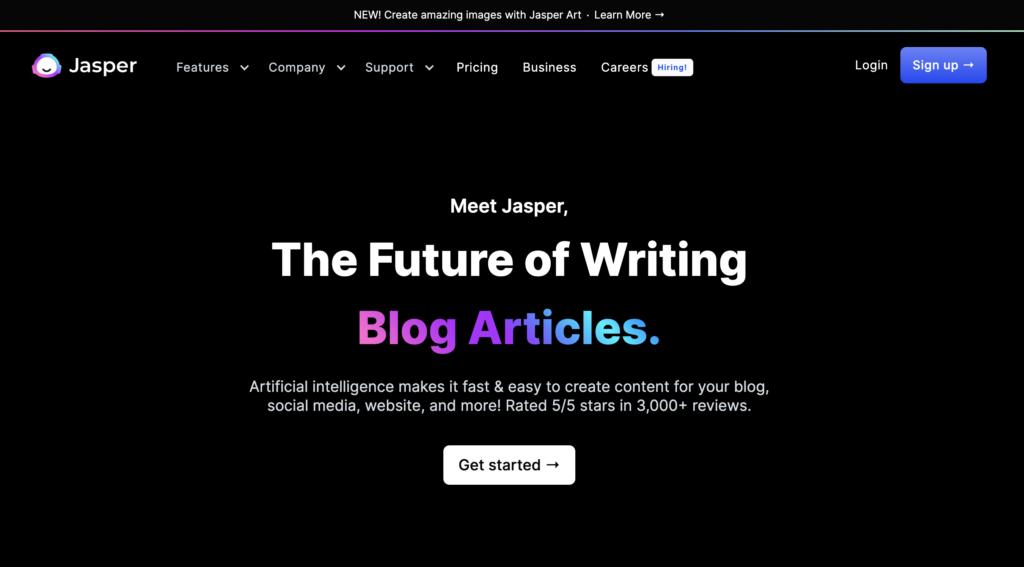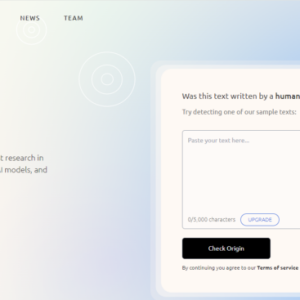In today’s rapidly evolving technological landscape, artificial intelligence (AI) has become an integral part of various industries, revolutionizing the way businesses operate. One of the most groundbreaking developments in this field is the advent of GPT-4, or the fourth generation of the Generative Pre-trained Transformer models. GPT-4 represents a significant leap forward in AI capabilities, offering businesses unprecedented opportunities to leverage advanced language processing and understanding. With its enhanced capabilities, GPT-4 has the potential to transform the way organizations interact with customers, automate processes, and make data-driven decisions. In this article, we will explore the key features and advancements of GPT-4 and discuss how it can empower businesses to thrive in the age of AI.
- 11 Powerful Generative AI Use Cases For Entrepreneurs To Scale
- Image Processing Tools: Your Best Options for Enhancing Visuals Today
- Google Bard YouTube Integration: What Marketers Need to Know
- Article Forge vs WordAi: Is One Better Or Should You Use Both?
- 9 Mind-Blowing AI Movie Generator Programs For Dynamic Content
It’s no secret that the power and use of AI (Artificial Intelligence) are growing exponentially. In fact, according to forecasts by Gartner, the worldwide AI software market is growing at a rate of 21.3% per year and is expected to generate a whopping $62.5 billion in revenue in 2022!
You are viewing: What Is GPT-4 And How Will Advancements in AI Help Your Business?
With numbers like that, it’s no wonder businesses of all sizes are looking to get in on the action and see how AI can help them grow. And one of the most talked-about AI applications right now is GPT-4.
So, what is GPT-4? And how will it be able to help your business grow? Let’s take a closer look.
What Is GPT-4 Technology?
“Generative Pre-trained Transformer” or “GPT” is essentially a string of language processing models that evolve and learn through AI. This machine learning model can generate new text using data from the internet and other databases.
And what sets GPT apart from similar deep learning AI content creation models is that it incorporates technologies like NLP (Natural Language Processing) and NLG (Natural Language Generation).
These technologies allow this AI to better understand and reproduce human language, argumentation, and thought patterns.
What Does GPT-4 Mean For Language Modeling?
These days, AI language models seem to be growing bigger and bigger.
But unlike some newly-released and larger AI models – like Megatron-Turing (which holds the record for the largest neural network with over 530 billion parameters) – GPT- 4 is going to be more focused on providing greater functionality and using resources more efficiently to provide results rather than relying on a huge set of parameters.
OpenAI’s CEO Sam Altman recently announced in a Q&A session that the organization is not currently focusing on producing extremely large models but rather, getting the most out of smaller models with the help of better optimization.
This is because recent studies from experts at DeepMind have already shown that smaller models (with enough optimizations) can more than keep up with bigger models like the Megatron-Turing and Google’s PaLM AI.
Not to mention how smaller models are also more environmentally friendly, requiring less computation power and cost.
But given that the previous iteration (GPT-3) featured around 175 billion parameters, it’s likely GPT-4 will at least have a larger number of parameters.
In fact, some reports suggest that it will likely feature 5 times ‘neural network’ capacities, or in other words, a whopping 100 trillion parameters. However, OpenAI is quite tight-lipped about the new iteration of the GPT language model, and we can’t be 100% sure till it’s launched.
But what we can be sure of is that OpenAI’s GPT-4 will be able to generate texts that are more human-like and respond to user queries in a more natural way than previous versions of the model.
We also know that because GPT-4 is a text-only model in a landscape where multimodal AI is becoming increasingly popular. OpenAI is probably trying to push text-only models to the limit before moving on to multimodal deep learning AI of the future with its coming generations.
And due to the industry’s growing interest in AI safety, we will likely get some developments in that area with the soon-to-be-released GPT-4.
For example, we could expect better flagging/identification and the generation of toxic content (a shortcoming from which previous versions have suffered).
What Does It Mean For Users And Businesses?
For the average internet user, the release of GPT-4 will probably mean they’ll get even more AI-generated content.
That’s not to say that this isn’t already the case, but there’ll likely be a significant increase in AI-generated blog posts, social media posts, and articles due to better output capacities.
See more : Krisp Review: Best Noise Cancelling App for Your Needs?
As for businesses, GPT-4 could be a literal game-changer.
Simply put, the release of GPT-4 will mean that businesses will soon have access to an AI tool that can generate vast amounts of relevant and accurate text-based content.
This, in turn, can help businesses save time and money while also growing their reach and audience.
The wide variety of writing-aid AI tools that could come about due to the new GPT model will also mean that professional writers will have more help available to them than ever before.
How Can It Grow My Business?
OpenAI’s focus on functionality and being more human-like in responses is great news for businesses who want to use AI to interact with their customers.
It also means that businesses will be able to get more out of GPT technology in terms of content generation, customer support, and even sales and marketing.
- Large volume content creation: Businesses can use the new AI language model to create high-quality content at scale in content generation. This could be anything from blog posts and articles to social media posts and even product descriptions.
- Enhanced customer support: In terms of customer support, businesses will also be able to utilize AI to provide more human-like responses to customer queries. This could help to reduce the number of support tickets and queries as customers will feel like they are getting more personalized service.
- Personalized marketing experience: Lastly, in terms of sales and marketing, businesses can also use GPT-4 OpenAI to generate targeted content and ads. This could help to increase conversion rates as the content will be more relevant to the user.
As you can see, the possibilities are almost endless when it comes to GPT-4 and how businesses can use it to grow.
So, if you’re looking to get ahead of the competition, now is the time to start asking questions like “What Is GPT-4” and “What can GPT-4 OpenAI do for your business?”
GPT-4 vs GPT-3
GPT-4 is definitely going to be an improvement on GPT-3 in several ways, most notably in its ability to generate texts that mimic human behaviors and speech patterns in response to a user’s prompts (and you may also be interested in learning about the best text to speech ai).
Due to the countless optimizations, it’s also likely that GPT-4 will be significantly better at inferring a user’s intentions and will produce much better results even with human errors when prompting than the previous versions of GPT.
And as mentioned before, GPT-4 is also expected to significantly increase from the 175 billion machine learning parameters featured in GPT-3 to somewhere along the 100 trillion parameters ballpark.
Plus, OpenAI’s dedication to continually developing algorithms like RLHF (Reinforcement Learning from Human Feedback) means that such techniques will almost certainly have been used during the development of GPT-4 to ensure it avoids the shortcomings of previous versions.
For example, these techniques may allow GPT-4 to be better equipped to infer what kind of content humans would like to read and generate texts accordingly.
It might also help reduce the likelihood of the AI language model generating toxic or racist content, similar to what was seen in less mature iterations of the machine learning language model.
All in all, GPT-4 looks set to be a significant improvement on GPT-3, and could well be the game-changing AI tool businesses have been waiting for.
Optimality: Getting The Most Out Of GPT-4
All language models have always had one major limitation when it comes to optimization. Because training is so costly, companies tend to make trade-offs between accuracy and expense. This commonly leads to models being highly under-optimized.
For this same reason, GPT-3 was only trained once despite some errors that may have required re-training in other cases.
However, at that time, OpenAI chose not to do it due to excessive costs, preventing researchers from finding the best set of parameters for the AI model.
Fortunately, OpenAI and other companies like DeepMind are now exploring new approaches and leading the way in finding optimal models rather than just hyper-focusing on larger, less optimized ones.
What Are The Potential Risks Of GPT-4?
The potential risks associated with GPT-4 OpenAI are similar to those of any other AI tool. For example, there is always the potential for misuse.
See more : 6 AI Joke Generator Options: Can Artificial Intelligence Make You Laugh?
As GPT language models get better at generating human-like text, it’s possible that it may end up being used for malicious purposes such as:
- Creating fake news
- Spreading misinformation
- Mass-producing clickbait and spam content (by abusing otherwise helpful clickbait title generators)
Of course, these risks come with any new technology like this, and as such, they should not discourage businesses from exploring the potential of the upcoming GPT-4 model.
Rather, these risks should simply be seen as something to be aware of and take steps to mitigate.
The Current State Of AI: What Is GPT-3 Used For?
Several different tools currently use GPT-3 AI text-only writing tools, most notably in the content and copywriting industries.
Some of the most popular AI tools that use GPT-3 include:
Jasper
Jasper is likely the most popular content generation tool that helps users create large volumes of text once they’ve entered a few important details about their writing task.

Jasper uses GPT-3 technology and even recently added AI image features. It’s also recognized as one of the fastest-growing private companies in America by The Inc. 5000 magazine.
Don’t miss our Jasper review for a full breakdown of its capabilities.
CopyAI
CopyAI is one of the most popular online AI copywriting tools that use GPT-3 technology to generate human-like and persuasive copywriting content.

In fact, it’s so popular that it gets roughly 4.3 million visits every month and has been used by more than 380,000 users to produce marketing copy for their businesses since its launch just over a year ago.
Don’t miss our full Copy.Ai review to learn more!
ShortlyAI
ShortlyAI is another solid AI writing tool that is developed specifically for writers, freelancers, and copywriters to help them deal with writer’s block.

Racking up a respectable 500,000 visitors each month, ShortlyAI is another AI tool that is based on the GPT-3 language model.
Similar to the other AI tools, it can be used to generate large volumes of content fairly quickly and easily.
Check out our ShortlyAI review to learn more!
These are just a few of the many AI tools that are currently using GPT-3. And as the technology continues to develop and newer versions keep popping up, and even more AI writing tools will likely start using GPT technology in the future. Just like Frase did when they moved from their own proprietary AI software to GPT.
And if you’re ever curious about, say, a competitor site uses AI to scale their content – you can use a helpful AI detection tool like Originality.ai.
Final Thoughts – GPT-4 & The Future
As you can probably tell by now, GPT-4 will likely have the potential to change how online businesses operate and produce content once it’s fully released.
Of course, as with any new technology, there will always be risks associated with its use.
But if users and businesses are aware of these risks and take steps to mitigate them, then there is no reason why they shouldn’t be able to explore the potential of GPT-4 and other AI writing tools based on the language model.
And while we don’t know the exact answer to the question of “when is GPT-4 coming out?” (it was rumored to be August 2022 – but that obviously didn’t happen), one thing is certain: it’s definitely something to keep an eye out for if you’re a business owner or content creator!
That concludes the article: What Is GPT-4 And How Will Advancements in AI Help Your Business?
I hope this article has provided you with valuable knowledge. If you find it useful, feel free to leave a comment and recommend our website!
Click here to read other interesting articles: AI
Source: hiddenshard.com
#GPT4 #Advancements #Business
Source: https://hiddenshard.com
Category: AI





